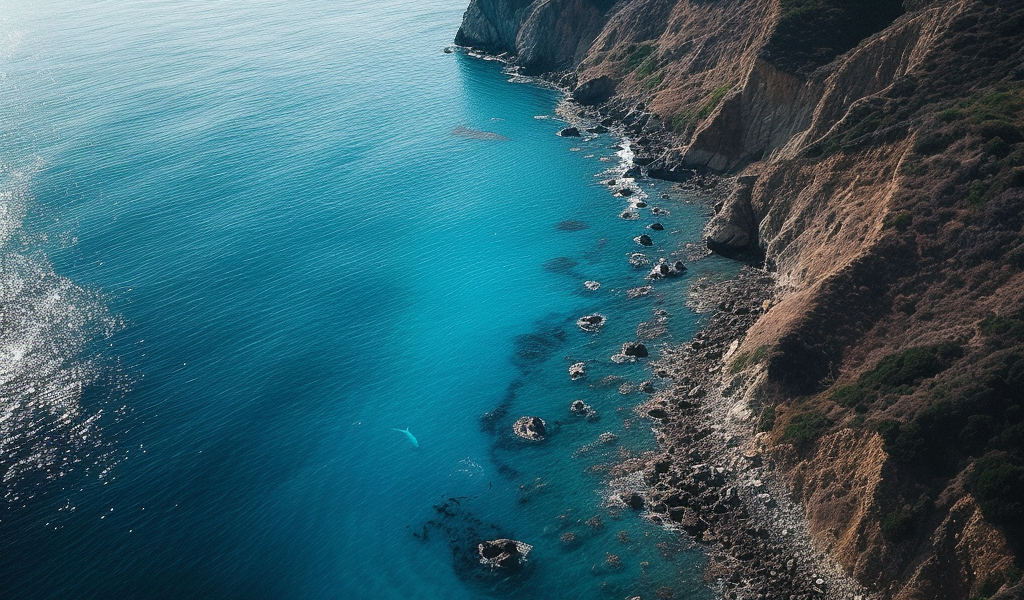Drone footage shot off the coast of Southern California may have revealed the first ever glimpse of a newborn great white shark in the wild. The 1.5-meter-long (5-foot-long) white shark was spotted on July 9, 2023, 400 meters (1,300 feet) off the coast of Carpinteria, California, by wildlife filmmaker Carlos Gauna and Phillip Sternes, a doctoral student in the department of biology at University of California Riverside, while they were shooting aerial video and images.
Its pale coloring and size immediately struck the duo as unusual. Adult great white sharks are gray on top and white underneath. Gauna and Sternes examined the images and video in the viewfinder of the drone camera and noticed a thin, white film covering the shark that was sloughing off the animal as it moved.
They enlarged the images, put them in slow motion, and realized the white layer was being shed from the body as it was swimming. Sternes said, ‘I believe it was a newborn white shark shedding its embryonic layer.’
While in utero, embryonic sharks feed on unfertilized eggs for protein. The mothers offer additional nourishment to the growing shark pups with a milk secreted in the uterus. It’s some of this material that Gauna and Sternes believe gives the shark its unusual coloring. They documented their observations in a study published Monday in the peer-reviewed Environmental Biology of Fishes journal.
If their assessment is correct, it’s the first time that a newborn great white shark has been observed in the wild. Gauna said, ‘Where white sharks give birth is one of the holy grails of shark science. No one has ever been able to pinpoint where they are born, nor has anyone seen a newborn baby shark alive. There have been dead white sharks found inside deceased pregnant mothers. But nothing like this.’
An alternative explanation for the shark’s whitish color could be that it was caused by an unknown skin disorder, according to the study. However, Gauna and Sternes said





